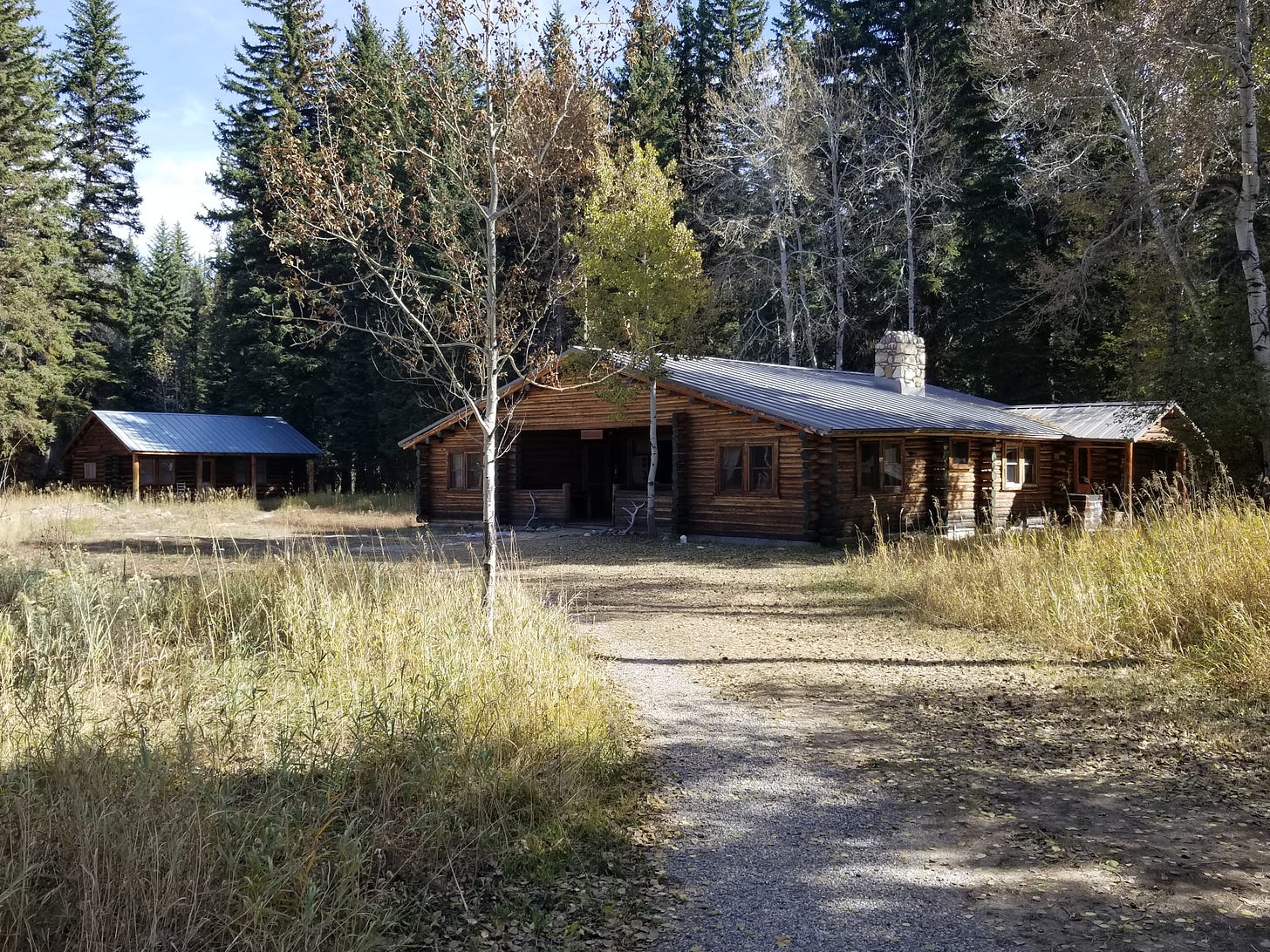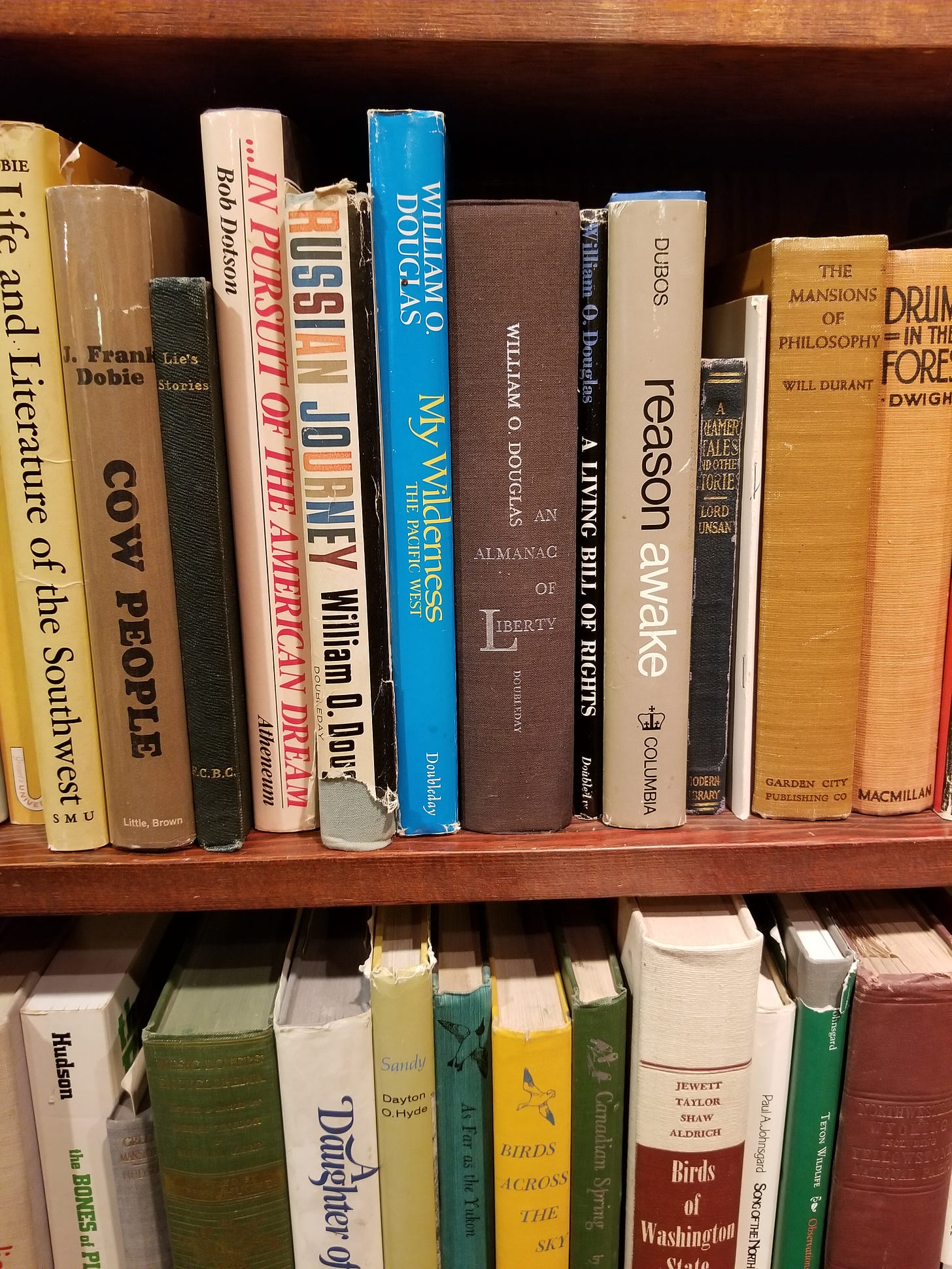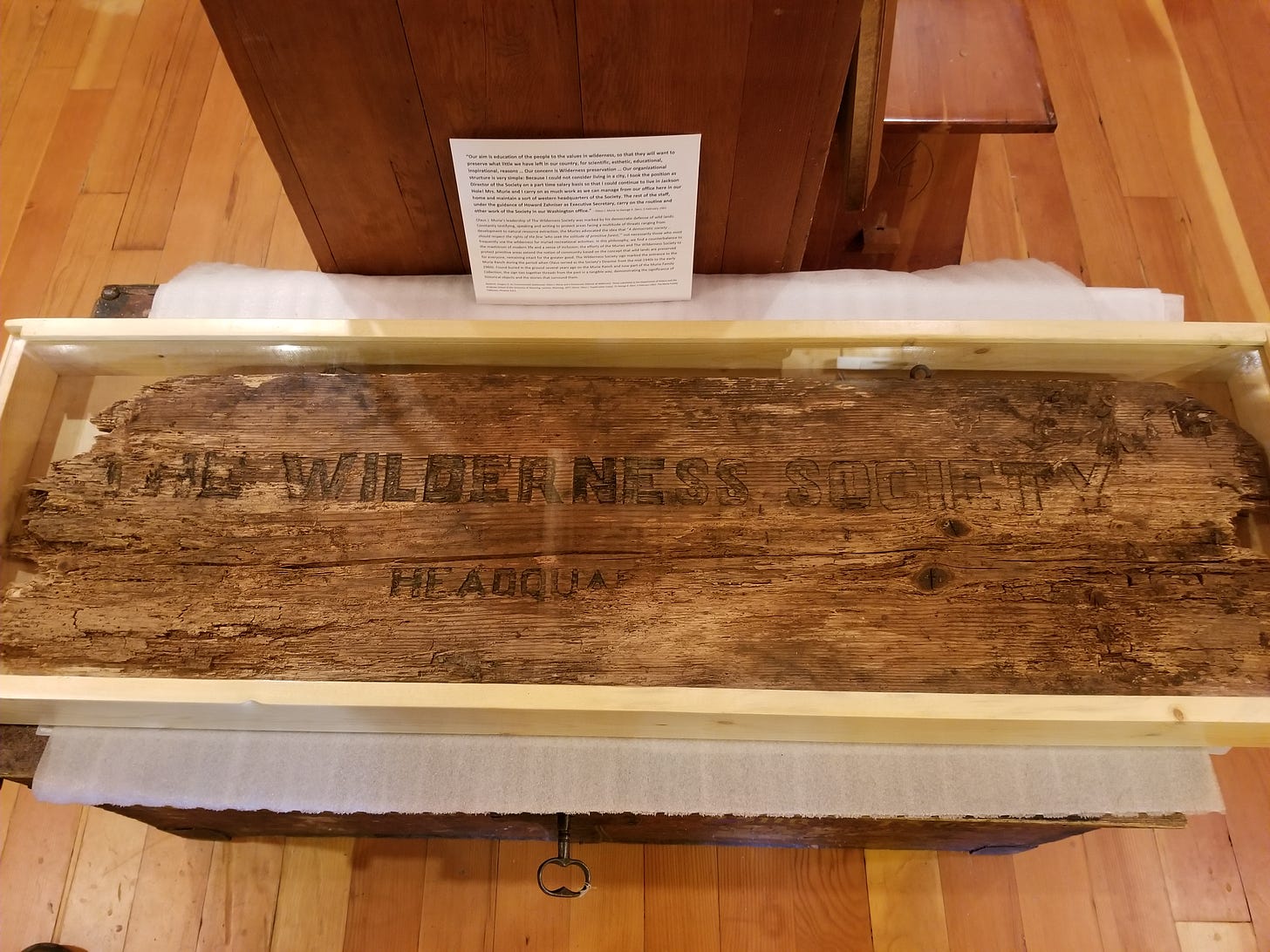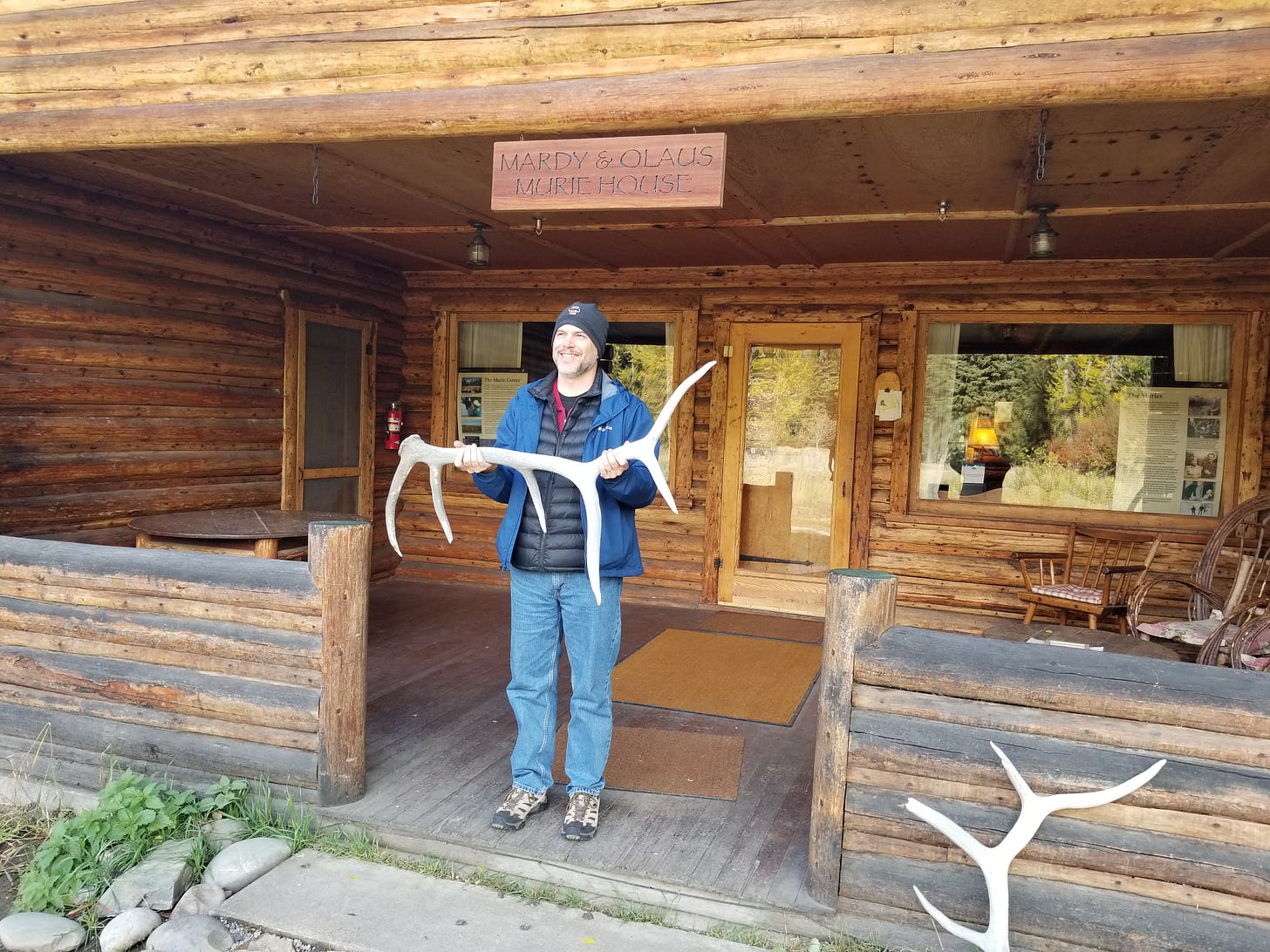For this round, The Field Trip is a retrospective to fall 2019. At the time, I took a long road trip that included archival visits in Laramie and Denver along with some “fieldwork” in Jackson Hole and Rocky Mountain National Park. I was on the historical trail of elk and needed to spend time in their habitat. At Moose, Wyoming, is the Murie Ranch, now part of the Teton Science Schools. My visit there brought to life for me Olaus and Margaret “Mardy” Murie, powerful models for conservation. Read on!
The Muries and the Ranch
Last week, I relayed a brief history of the National Elk Refuge. Its creation in 1912 solved little of the complicated problem. In 1927, an Elk Commission was established out of the auspices of the Commission on Outdoor Recreation. The commission aimed to study the problem and search for solutions. Its report, The Conservation of the Elk of Jackson Hole, Wyoming, noted how much then-current policy had been based on guesswork.
Basic scientific questions and answers needed to be addressed. To do so, the US Biological Survey, a forerunner to the US Fish and Wildlife Service, appointed wildlife biologist Olaus Murie to become the elk expert.
Olaus relocated with Mardy to Wyoming from Alaska for an assignment he described in Wapiti Wilderness (1966) as “free yet demanding.” They remained in Jackson Hole the rest of their lives.
In 1945 the Muries – Olaus and Mardy and their half-siblings who also married, Adolph (Ade) and Louise “Weezy” – bought a dude ranch from Buster Estes, creating The Murie Ranch, now on the National Register of Historic Places and incorporated in Grand Teton National Park.
The Cabin and Its Details
If this week’s newsletter were The Classroom, I’d spent more time describing and assessing the enormous contributions to conservation made here, but since The Field Trip is the focus, I want to focus a bit on the place.
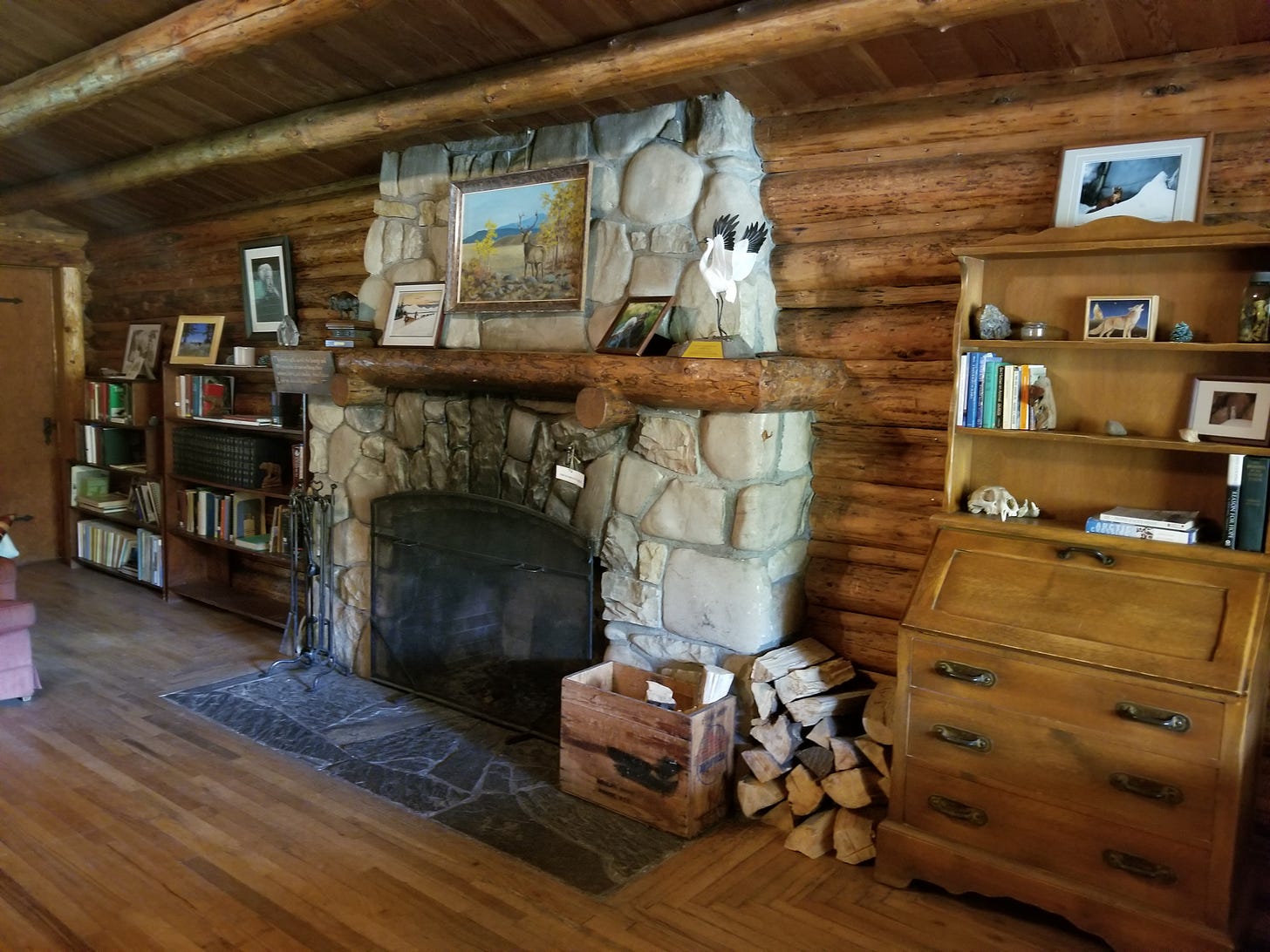
I visited twice within a couple weeks of each other, in late September and early October. No fire burned in the beautiful stone fireplace; I kept my beanie and layers of outerwear on. Books and Olaus’s wildlife paintings lined almost every wall, comforting me despite the chill air. As usual, I worked to place myself in the past in this spot. Visual cues made this easy.
When people came to Moose to visit with Olaus and Mardy, they read these lines painted in white on a wooden plank, attached to the mantel, left of that stone fireplace.
The wonder of the world, the beauty and
the power, the shapes of things, their
colours, lights, and shades; these I saw.
Look ye also while life lasts.
The story the docent told me was that Olaus found the saying on an English gravestone and searched to find that it originated in Wild Lone: The Story of a Pytchley Fox (1938) by Denys Watkins-Pitchford. When I investigated further, it appeared that Watkins-Pitchford used the phrase in all his books for children and his father found it on a gravestone in an old churchyard, maybe in Cumberland. Regardless of its precise provenance, the sentiment resonated with the Muries. Not only did it appear on the mantel; it serves as the epigraph in Wapiti Wilderness.
The passage reminds me – and perhaps the Muries – that reckoning with death encourages one to notice the beauty of life.
The kitchen looks as it did when Mardy used it, making cookies (I was told) for her visitors. Above the old phone, numbers for family members, the park, and a doctor still are penned on a her stationery.
In the bedroom where Mardy died in 2003 at 101 is a framed passage from Olaus’s writing:
In my opinion one extremely important key to any success is tolerance. It is one of the most precious gems distilled out of human thought and experience . . . tolerance is the key to our retaining the native fauna. Tolerance and affection for wild animals and plants, are the two human attributes that can do it.
Other writings of both Muries link these values that transcend natural history to include human history, too.
The Studio
The homey nature of the cabin felt comfortable, and the studio felt inspiring. More books and more art occupied the walls. I first encountered Olaus’s work when researching what became The Environmental Justice: William O. Douglas and American Conservation, because Olaus and Douglas corresponded and worked together for wilderness. Seeing a section of Douglas’s books struck the right chord with me.
My favorite artifact, though, was a rotten old sign.
Olaus worked with The Wilderness Society almost from its founding and became its president in 1950. A condition of his leadership was that he not have to relocate to Washington DC, the society’s basecamp. So, Moose, Wyoming, and the Murie Ranch became the de facto headquarters during the crucial years leading to the passage of the Wilderness Act. Unfortunately, Olaus died 1963, almost exactly one year before the law was signed.
The sign, apparently, disappeared for years and years, discovered under grass much faded. Since so much of my work traces wilderness history, seeing this sign delighted me.
Truth be told, the entire Murie Ranch delighted me.
Final Words
The work I referred you to last week about elk and Jackson Hole is relevant this week, too. An overview of my thinking on Justice Douglas is found here with a few references to the Muries. As I’ve explained before, my research on elk is still mostly in-progress; someday, I trust, I’ll be able to link to more publications.
As always, you can find my books, and books where some of my work is included, at my Bookshop affiliate page (where, if you order, I get a small benefit).
Taking Bearings Next Week
The Library comes next week, and I’ll continue this related series by exploring Mardy Murie’s classic book, Two in the Far North. Stay tuned!
As we move in the direction of summer, I’m making a push to increase my subscribers and the engagement with these Taking Bearings newsletters. So if you want to help with that, please press the Like button below or leave a Comment. If you know others who might enjoy this weekly newsletter, please share it with them. And if you are able, consider upgrading to a paid subscription. Thank you for reading.



